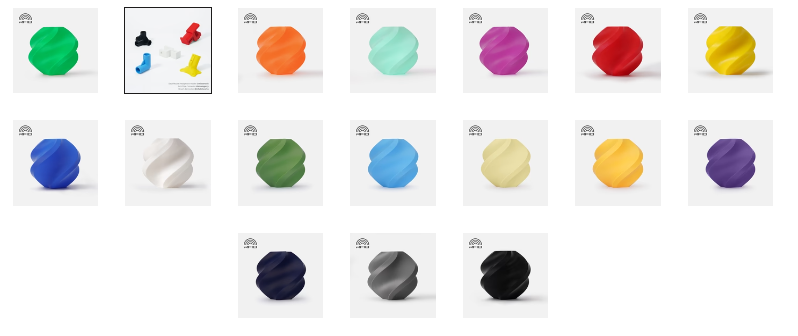Introduction
Choosing the right filament is critical for successful 3D printing. Each filament has unique properties suited for different projects, from prototyping to functional parts. At Innoaddi, we offer a range of high-quality filaments, and this guide will help you choose the best one for your needs.
Common Types of Filaments
-
PLA (Polylactic Acid):
The most popular filament for beginners. It’s easy to print with, biodegradable, and produces sharp, detailed models. PLA is best for prototypes, educational projects, and decorative items. However, it has low heat resistance, making it less suitable for functional parts. -
ABS (Acrylonitrile Butadiene Styrene):
Durable and heat resistant, ABS is good for mechanical parts and functional prototypes. It requires higher printing temperatures and a heated bed. Printing ABS requires proper ventilation due to fumes and tends to warp if not printed in enclosed chambers. -
PETG (Polyethylene Terephthalate Glycol):
PETG combines strength and flexibility with ease of printing. It is less prone to warping than ABS and more durable than PLA. PETG is a versatile filament suitable for functional parts and items needing chemical resistance. -
TPU (Thermoplastic Polyurethane):
A flexible, rubber-like filament used for parts needing elasticity, such as phone cases and seals. TPU requires slower print speeds and specific extruder setups for best results.
Factors to Consider When Choosing Filament
-
Project purpose: Decorative, functional, flexible, or high-strength parts?
-
Printer compatibility: Ensure filament matches nozzle size and printer capabilities.
-
Mechanical properties: Strength, flexibility, heat resistance needs.
-
Finish and color: Surface finish quality and available colors.
-
Environmental factors: Biodegradability or resistance to elements.
Filament Handling and Storage Tips
-
Store filaments in airtight containers to prevent moisture absorption.
-
Keep filaments dry with desiccant packs.
-
Load and unload filament carefully to avoid jams.
-
Use correct print settings for each filament type for best results.
Innoaddi’s Filament Offerings
At Innoaddi, we provide premium filaments compatible with Bambu Lab printers, including PLA, PETG, ABS, and specialty filaments. Our filaments are quality-tested to ensure consistent diameter and color, reducing print failures. We also offer expert advice to help you select the right filament and optimize printing parameters.
Conclusion
Selecting the right filament sets the foundation for successful 3D prints. Explore Innoaddi’s filament options and expert support to bring your projects to life with confidence.







